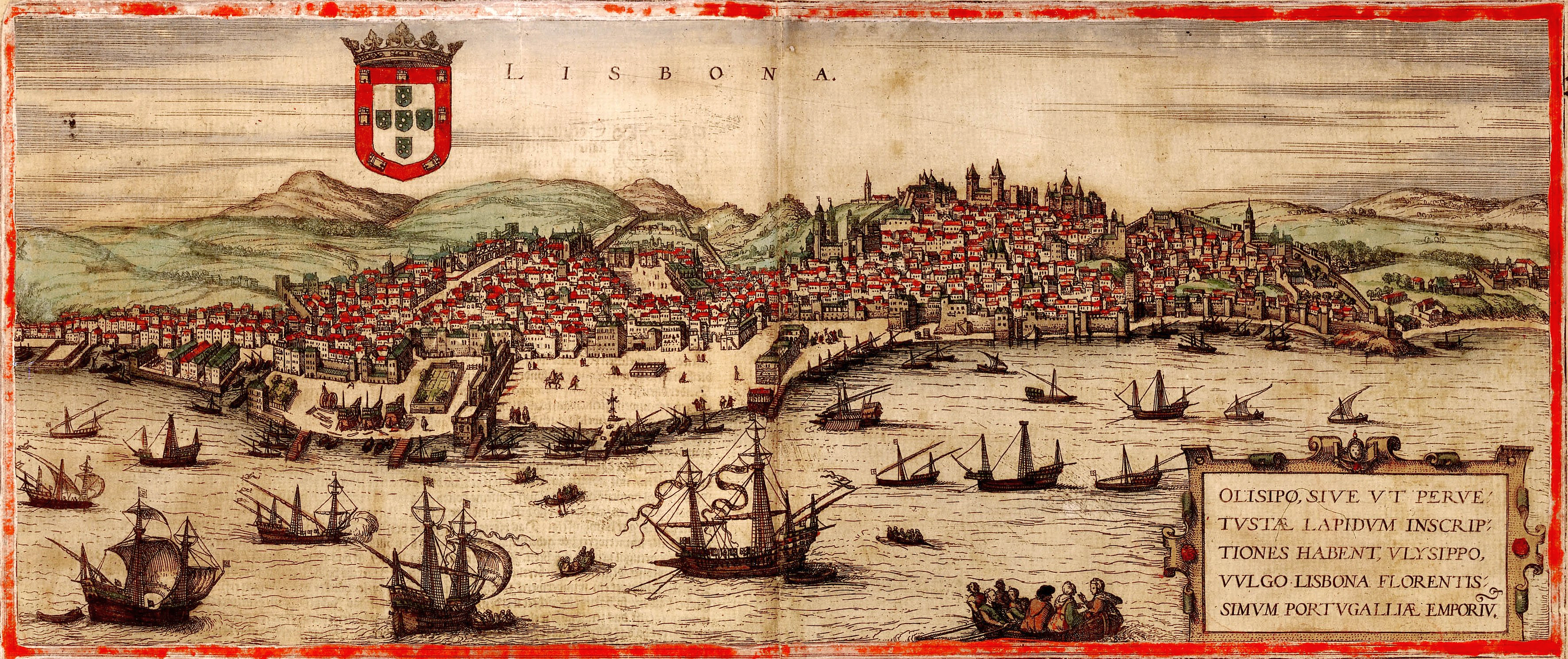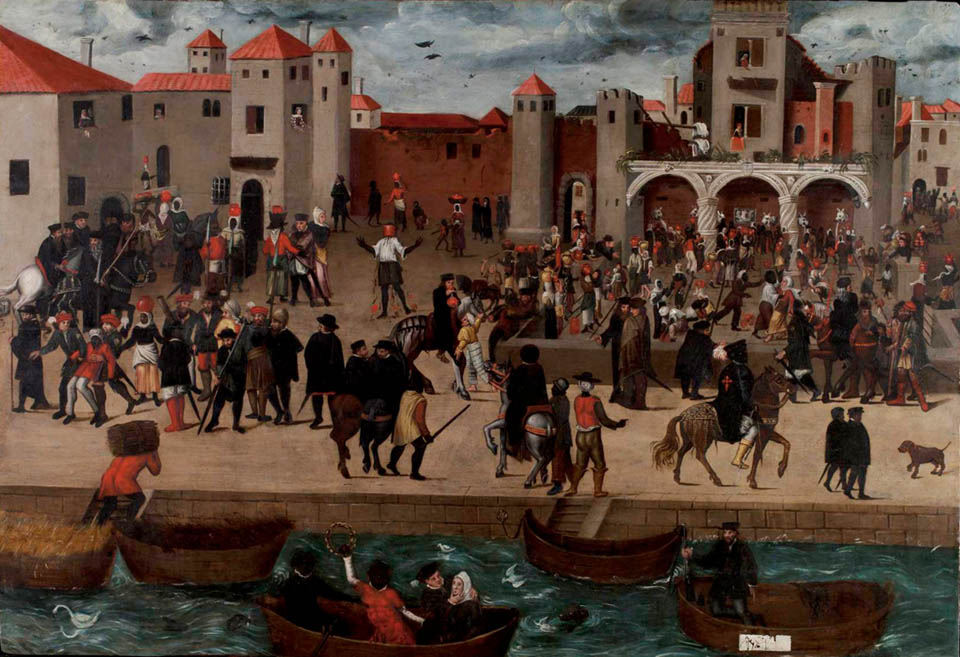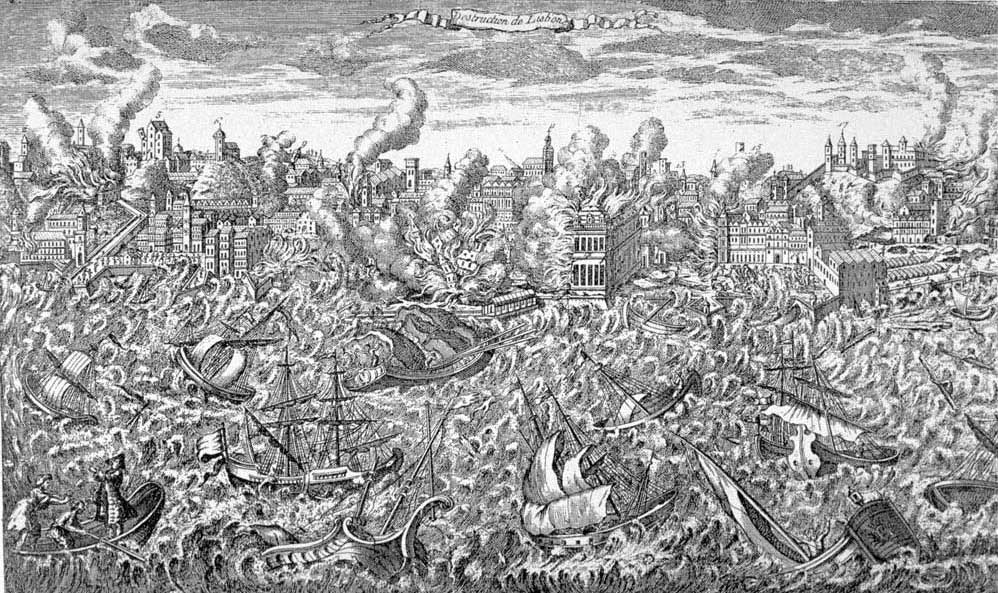Portuguese India Route
Francisco Contente Domingues, Chase Oswald, Zachary Mead, Filipe Castro
Introduction
Vasco da Gama opened a maritime route from Europe to the Asian markets of spices and exotic goods in 1497-1499. His successful trip to India, around the Cape of Good Hope drastically changed the commerce between these two regions. Capable of carrying the equivalent cargo of a caravan of 200 camels or more, each ship brought to Europe a large quantity of spices, drugs, porcelains, cotton cloth, exotic animals, plants, animals, and tastes. The Portuguese kings sent a fleet to India almost every year, for over a century. These voyages are relatively well documented, as well as their routes, their ports of call, the names of the ship’s captains, the Asian governors, or the notable soldiers that traveled in them. We know a good deal about the economics of this trade, its impact in 16th-Century Europe, the business networks it generated in various countries, and the role of the Church in the European expansion.

The 16th century is a relatively well documented period in the history of Portugal. Writers and poets like Luis de Camões, Sá de Miranda, Gil Vicente, Bernardim Ribeiro, Garcia de Resende, Jerónim87o Corte Real, and so many others left us a good insight of the social and political life in Portugal in this period.
The discovery of slave markets on the African coast in the mid-15th century must have changed the country’s landscape, as the number of African Slaves and migrants increased, both in the countryside and in the major cities.

The Ships
We don’t know much about the ships of this expansion: the Portuguese Indiamen. We have a few treatises, all dating to the late 16th century, some iconography, a few allusions to ship’s parts in the accounts of voyages or of the shipwrecks, but we have a long way to go before we manage to have a good idea of how these vessels were conceived, built, or how did they perform in heavy seas, how did they evolve during the 16th and early 17th centuries.
The Armadas
Every year in late March or late April a fleet departed Portugal to India. Some ships were sent to stay in India and engage in the Asian trade. Other were sent to load with merchandise and sail back to the kingdom.
Most ships arrived safely, but some were lost and among these some were found and looted by fishermen, sport divers, or treasure hunters. In spite the destruction of almost all of these sites, some of the artifacts were preserved and some were published, together with pieces of the hull remains, or rigging.

It is difficult to reconstruct the fleets, the voyages, or even the shipwrecks. Few accounts remain and a substantial portion of the archives accumulated in Lisbon was destroyed by the earthquake of 1755.
There are several surviving lists with the names of the captains of each ship that left Lisbon for India, sometimes indicating the name of the ship, and sometimes, in the case of shipwrecks, the place where they were lost.
To our knowledge there is no comparative critical study of all the surviving lists of armadas and their shipwrecks. João Vidago’s seminal work stands as the best summary of the India Route fleets, and we would like to make the primary data available and use his work to develop a database with as much data as feasible. As mentioned in Armadas da India, we used the Relação de capitaens mores e naos que vierão do reyno a este estado da india des do seu descobrimento, transcribed by Eduardo Frutuoso, as the base for this inventory, and we intend to add the two lists surviving in the British Library Codex Add. 20902 as a base, transcribed and published by Maria Herminia Maldonado in 1985, the 11 lists published by Cte, Encarnação Gomes between 1989 and 1996, the works of Eulália Paulo, Paulo Guinote, Eduardo Frutuoso, and António Lopes, the lists from Lisbon and Evora, and the two illustrated lists known as Livro de Lisuarte de Abreu and Memória das Armadas.
Other fleets were armed in Asia and engaged in pendular trips to China, Japan, the Gulf, the Red Sea, Malaysia, and other commercial harbors, or were deployed to wage war on local kingdoms or on the Ottomans. regular trips to Brazil, Cape Verde, or the western and eastern coasts of Africa, and the summary of these ships and shipwrecks is not done.
This page is part of a collective project developed in support of MS student Chase Oswald’s thesis, and aims at inventorying the Portuguese shipwrecks of this period worldwide and recover their stories, when possible.
Shipwreck Accounts
Shipwreck accounts and descriptions of long voyages or naval battles have fascinated readers since ever. In early modern Portugal a number of accounts of voyages and shipwrecks from the Carreira da India were published in the 16th century and republished by Bernardo Gomes de Brito in 1735-36, under the title História Trágico-Marítima. These accounts are famous and have been translated into several languages, but are not unique.
This form of literary fiction is important for nautical archaeologists, mainly because they may sometimes allow us to identify a shipwreck, but also because they contain information about the ships, the crews, the passengers, and life aboard in general.
In the 1990s Alexandre Monteiro sent us a number of these accounts and the list presented below is largely a result of his research.
The Shipwrecks
Most of the shipwrecks included in this section were salvaged by treasure hunters and are thus difficult to date, let alone identify. Treasure hunters have destroyed most Iberian shipwrecks from the early modern period, sold the artifacts with market value, and abandoned the rest to the elements.
Because treasure hunters are not bound by any moral, ethical, or deontological rules, they work in complete secrecy to avoid public or professional scrutiny. This lack of data makes it difficult, even for specialists, to interpret their finds. Moreover, treasure hunters regularly fake data, assign fake provenances to artifacts they retrieve elsewhere, or buy, or often times falsify.
the information contained in this section is therefore interpretive and often times consists of educated guesses.
Unidentified
Al Hallaniyah (1503) (images missing)
IDM-003 (c. 1550-1650) (not done)
IDM-012 (c. 1550-1650) (not done)
IDM-013 (c. 1550-1650) (not done)
IDM-014 (c. 1550-1650) (not done)
IDM-017 (c. 1622) (not done)
IDM-018 (c. 1650-1750) (not done)
MOG-002 (c. 1550-1650) (not done)
MOG-003 (c. 1622) (not done)
NAC-003 (c.1550-1650) (not done)
Tentatively Identified
Bom Jesus (1533) (not done)
S. João (1552) (history section missing – Chase Oswald)
S. Bento (1554) (not done)
Santo António (1589) (not done)
Santo Alberto (1593) (not done)
Pepper Wreck (1606) (not done – images missing)
Madre de Deus (1610) (not done)
São João Baptista (1622) (not done)
Santa Catarina de Ribamar (1636) (not done)
N. S. da Atalaia do Pinheiro (1647) (not done)
Santíssimo Sacramento (1647) (not done)
Santo António de Taná (1697) (not done)
Historical References of Shipwrecks
This list was elaborated over the data published by Guinote, Frutuoso and Lopes (1998) and is a work in progress.
1497
Unknown (Captain Gonçalo Nunes or Duarte Nunes), outbound, abandoned and burned near Aguada de S. Brás (1497).
S. Gabriel (Captain Paulo da Gama), inbound, lost at Baixos de S. Rafael (1499).
1500
Unknown (Captain Aires Gomes da Silva), outbound, lost in a storm near the Cape of Good Hope.
Unknown (Captain Simão de Pina), outbound, lost in a storm near the Cape of Good Hope.
Unknown (Captain Vasco de Ataide), outbound, lost in a storm near the Cape of Good Hope.
Unknown (Captain Bartolomeu Dias), outbound, lost in a storm near the Cape of Good Hope.
1501
El-Rei (Captain Sancho de Touvar), inbound, lost on the coast of Malindi.
1502
Santa Elena or São Pantaleão (Captain Pedro Afonso de Aguiar), outbound, stranded on Parcel de Sofala after a storm (1502).
Esmeralda (Vicente Sodré) and São Pedro (Brás Sodré) at the Curia Muria Islands (1503).
1503
N. S. da Conceição (Pedro de Ataide), Rainha (Francisco de Albuquerque), and Faial, or Faia (Nicolau Coelho), all near the Baixos de S. Lázaro (1504).
A fourth ship (Pero Vaz da Veiga) was lost at the Cape of Good Hope (1503- 1504).
1504
Unknown (Pedro de Mendonça), stranded near Aguada de São Brás (1505).
1505
Unknown (Lopo Sanches), lost in a storm close to Cabo das Correntes (June or July 1505).
Bela (Pedro Ferreira Fogaça), lost in a storm on the coast of Guinea, around the latitude of Equador (May 4, 1505).
Santiago (Pedro de Anhaia) lost at the mouth of the Tagus (March 25, 1505).
São João (Francisco de Anhaia), Mozambique or Quiloa (1505).
Santiago or «Galega» (Pedro Barreto de Magalhães), leaving the bar of Quiloa (April 6, 1506).
1506
Leitoa (Leonel Coutinho), Mozambique (1507).
São Vicente (Rui Perreira Coutinho) Coast of São Lorenço or Terra do Natal (1506).
N. Sra. da Luz (João Gomes de Abreu), Pate (1506)
Santa Maria das Virtudes (Jorge Botelho) Pate (?).
unknown (Job Queimado), captured by French pirates, Atlantic Ocean (1509?)
1507
São Romão (Vasco Gomes de Abreu, or Lopo Cabral), São João (Pedro Lourenço), São Simão (Rui Gonçalves de Valadares), and another ship, all lost between Sofala and Mozambique (1507).
1508
Santa Clara (Jerónimo Teixeira), between Malacca and India (1509-1510).
Unknown (Gonçalo de Sousa), in the Indian Ocean (1508-1509).
São João (Jorge de Aguilar), near Tristão de Cuhna Islands (1508).
1509
São Vicente (Francisco de Sá?) and São Jorge (Sebastião de Sousa), stranded at baixos de Padua, Cananor (1510?).
1510
São Roque? (Manuel da Cunha), lost in Mozambique (1510).
1511
S Maria da Luz? (Jorge de Brito) or São Pedro? In Penedo de São Pedro (1511)
1512
S Antonio?, S Gião?, or N Sra das Virtudes? (Francisco Nogueira) near baixos of Angoxa (1512)
1513
S Antonio?, S Gião?, or N Sra das Virtudes? ( Francisco Correia) near São Lazaro Island (1513)
1514
São Roque? (Luis Dantas) lost near Cambaia due to poor navigation(1514?)
1516
N Sra da Luz (Francisco de Sousa <<Mancias>>) and São Simão ( Antonio de Lima) lost in storm Near Baixos of S Lazaro, Island of S Lorenco in Madagascar ( August 1517?)
1519
Santo Antonio (Manuel de Sousa) Near Melinde/Quiloa? or Manfia Island (1519-1520?)
1522
N Sra de Nazare (D Pedro de Casro) lost to storm due to ship being in poor condition near Barra of Goa, India (1522?)
1523
São Miguel (Aires de Cuhna) wrecked after retirement in Mozambique (1523?)
1524
Barbosa (Francisco de Brito) lost between Mozambique and India (1524)
São Jorge (D Fernando de Monroy) in the Low waters of Melinde in Kenya (1524)
Santa Helena (Cristovão Rosado) lost to wreck on coast of Mozambique (August 1524?)
<<Garca>> (<<Mocem>> Gaspar) lost to a mutiny close to the Mozambique Coast (1524)
S Maria do Monte Sinai (D Luis de Meneses) lost on the Portuguese coast (1525)
1525
Corpo Santo (D Felipe de Castro) wrecked on the coast at Cabo de Rosalgate (November 19, 1525)
S Vicente or Victoria (Francisco de Anhaia) lost while leaving Lisbon, Portugal (April 1525)
S Maria de Paraiso (Diogo de Melo) lost close to Lisbon, Portugal in the Cachopos (July 4, 1527)
1526
1527
S Antonio or Conceicão (Manuel de Lacerda) and S Sebastião (Aleixo de Abreu) lost in the Bay of Santiago, on the island of S Lourenco in Madagascar due to poor navigation (1527)
S Ildefonso? (Pedro Aenes [French]) lost at sea( 1527)
1528
Flor da Rosa (Nuno da Cuhna) wrecked and burned on the Island of S Lourenco in Madagascar (Aug 23, 1528)
Biscainha? (João de Freitas) collided with another vessel near Vale de Eguas, close to the Canarie Islands (May 6, 1528)
Santo Antonio? ( Bernadim de Silveira) lost near Parcel de Sofala (1528)
Unknown (Afonso Vaz Azambujo) lost near the Island of João de Nova (1528)
1529
Conceição ( Henrique Moniz Barreto) lost between Goa and Ormuz, India (end 1529?)
S Roque ( Rui Mendes de Mesquita) lost in India (1529)
Flor de la Mar (Rui Gomes de Grã) lost between Ormuz and Indian in the Indian Ocean (End 1529)
1530
S. Dinis or Ajuda ( Duarte da Fonseca) lost in a storm near Socotorá (1530-1531?)
Santa Maria (Diogo da Fonseca) wrecked due to leaking and shortage of sailors near Socotorá or Mozambique (1530)
1531
Esperança (Manuel de Macedo) lost due to poor navigation near Calecar, India which is near Cabo Comorim (1531)
Castelo (Achilles Godinho) lost at sea (1532?)
Trindade (Diogo Botelho Perreira) lost at sea (1532?)
Vera Cruz (Manuel Botelho) lost due to poor navigation (1532)
1532
1533
Bom Jesus or S. João (Captain D Francisco de Noronha), outbound, lost near the Cape of Good Hope during a storm. Found and tentatively identified.
1534
1535
1536
S Miguel (Duarto Barreto [ or Pacheco]) lost at sea (1537)
1537
S Paulo (Diogo Lopes de Sousa) lost at sea near S Lourenço island(1538)
1538
Galega (Bernardim da Silveira) lost at sea (1538?)
1539
Esperança ( or Galaga?) (Pedro (or Diogo) Lopes de Sousa) lost at sea near S Lourenço island (end February 1540)
1540
Salvador «Burgalesa» (João Figueira de Barros) lost at sea close to Mozambique (1549)
1541
Santiago (Martim Afonso de Sousa) wrecked due to poor navigation next to Baçaim (April/May 1542)
1542
Grifo ( Balazar Jorge) lost near Terceira (1543)
1543
1544
1545
1546
Espírito Santo (Álvaro Barradas) wrecked at the Comoro islands (1547)
1547
São Tomé (D Pedro da Silva) lost near Angoxa island (1547)
Santa Cruz (Misser Bernardo Nacer) lost near Socotorá (Sept 1547)
1548
1549
Salvador «Burgalesa» (João Figueira de Barros) lost at sea close to Mozambique (1549)
1550
Flor de la Mar (D Diogo de Norohna) wrecked due to poor navigation next to Baçaim (May 31, 1551)
1551
Trinidade «Bicainha» (Lopo de Sousa) lost at sea (Feb 1552?)
1552
Santiago (António Dias de Figueiredo) lost at sea between the Azores and Portugal (Aug 1553 or 1554?)
Santa Cruz «Zambuco» (António Mariz Barreto) wrecked due to poor navigation in the Ceitapor river, near Goa (1552)
S. João (Captain D. Manuel de Sousa Sepúlveda), inbound, lost on the East coast of South Africa. Found and tentatively identified. The account of this shipwreck was published and is part of Manuel Gomes de Brito’s História Trágico-Marítima. (1552) (left port in 1550 according to Guinote data)
1553
S. António (Manuel de Tello Menezes) burned at the Barra of Lisbon, Portugal (early 1553)
1554
S. Bento (Fernão de Alvarez Cabral) sunk due to overloading at Terro de Natal (April 23, 1554)
S. Boaventura (D Pedro de Mascaranhas) lost due to a Storm near near Barra de Goa ( late 1554)
Santa Cruz «Burgalesa» (Belchior de Sousa) lost at sea (1555)
Victoria «Galega» (Francisco de Gouveia) lost at sea near Terceira Island (Aug 5, 1556)
1555
N Sra da Assunção «Algarvia, a Velha» (Jacome de Melo) lost due to a storm near Terceira Island (1556)
Conceição «Algarvia, a Nova» (Francisco Nobre) lost due to poor navigation near Baixos de Pero dos Bahnos (Aug 22, 1555)
1556
1557
S Maria da Barca (D Luis de Fernandes de Vasconcelos) lost at sea close to ihla de São Lourenço ( March 17, 1559)
N Sra de Relíquias «Flamenga» ( Antónia Mendes de Castro) lost at sea near São Tomé(?) (Aug 20, 1560)
Áquia (Franciso Barreto) lost due to poor ship condition near Mombaça (Aug 20, 1561)
1558
N Sra da Graça ( João Rodrigues Salema de Carvalho) lost due to a storm between the Cape of Good Hope and Terra do Natal (Nov 24, 1559)
1559
1560
São Paulo ( Rui de Melo da Cãmara) lost to a storm near Sumatra island (Jan 22, 1561)
Shipwrecks
1561
1562
São Martinho (D. Jorge Manuel) lost at sea (1563)
Cedro (D Rodrigo (or Pedro) de Castro) lost at sea (1563)
1563
N Sra da Graça (Diogo Lopes da Lima) lost at sea in the Cape of Good Hope(?) (March 15, 1565)
São Filipe (Vasco Lourenço de Barbuda) lost due to a storm near Barra de Goa (Sept 1563)
1564
Flor de la Mar (Damião de Sousa) lost due to poor ship condition in Mozambique (1565)
1565
Tigre (Bartolomeu de Vasconcelos de Sousa) lost due to poor navigation near Mozambique(May 16, 1566)
Shipwrecks
1572
Reis Magos (Duarte de Melo) lost at sea (1573)
São Francisco (Pedro Leitão de Gamboa) lost at sea (April 23, 1573)
1573
Santa Clara (Luís de Alter) lost at sea near Brazil (1575?)
1576
São Jorge (Balthazar Pessanha) lost due to poor navigation? near the entry of the Barra of Mozambique (1576)
1577
São Pedro (Manuel de Madeiros) lost due to poor navigation? near Baixos das Chagas or Peros dos Banhos (1578?)
São João (Miguel de Arnide [or Arruda]) lost due to poor navigation near Baixos of Pero dos Banhos (1578?)
Shipwrecks
1581
Reis Magos (Manuel de Miranda) lost at sea (April 10 or 20, 1582)
São Pedro (Leonel de Lima) lost due to poor navigation near Parcel de Sofala, Mozambique (1583)
1582
São Luís (Luís Caldera) lost due to poor navigation near Rio de Quelimane/Parcel de Sofala, Mozambique (1582)
1584
Boa Viagem (Lourenço Soares de Melo) lost at sea due to overloading (1585)
1585
Santiago (Fernão de Mendonça) lost due to poor navigation near Baixos da Judia (Aug 19-25, 1585)
São Lourenço (Fernão [or Reimão] Falcão) lost due to an inability to navigate near Mozambique (1586)
1586
Reis Magos (João Gago de Andrade) lost due to being overloaded near São Tomé (1588?)
Bom Jesus «Caranja» (António Gomes de Goes) wrecked near India (end 1586)
São Salvador (Miguel de Abreu) lost due to poor ship condition near Ormuz, Iraq (1587)
N Sra das Relíquias (Francisco Carvalho [or Cavaleiro]) lost due to overloading near Barra de Goa, India (Jan 5, 1587)
São Filipe ( João Trigueiros) Captured by Francis Drake near the Azores (June 8, 1587)
1587
Santiago (Francisco de Brio Lobato) lost due to poor navigation near Terceira Island in the Azores (Aug 14, 1588)
1588
São Tomé (Estevão de Veiga) lost due to poor ship condition near Terra do Natal in the Azores ( March 17, 1589
1589
Santo António (D João da Cuhna) lost at sea between India and Mozambique (1589)
1590
Bom Jesus (Manuel de Sousa Coutinho) lost due to possible overloading near Barra de Garajau (end of feb 1592)
São Lucas (Rui Gomes de Grã) lost at sea near the Canary Islands or Madeira (end 1590)
Espírito Santo (Diogo Pereira) taken by the English in sight of Lisbon, Portugal (Oct 28, 1590)
Shipwrecks
1591
São Bernardo (or Bartolomeu?) (Simão vas Telo) lost at sea due to overloading (March 10, 1592)
Madre de Deus (Fernão de Mendoça Furtado) taken by the English near the Azores (Aug 15 or 19, 1592)
Santa Cruz (António Teixeira De Macedo) burned to escape from the English near the Azores (July 9, 1592)
São Luis (Diogo Nunes Gramaxo) sunk due to poor ship condition near Mozambique (1592/1593?)
1592
Santo Alberto (Julião de faria Cerveira) lost due to poor condition and overloading of the ship near Tero de Natal in South Africa (March 26, 1593)
N Sra de Nazaré (Braz Correira) lost due to overloading and a storm off Mozambique (July 13, 1593)
1593
Changas (Francisco de Melo) lost due to enemy attack and overloading near Faial Island in the Azores (June 22, 1594)
São Bartolomeu (Lopo de Pina de Azavedo) Lost at sea (April 15, 1595)
São Cristovão (António Texeira de Macedo) lost due to poor ship condition between Mozambique and Goa (Aug 17, 1594)
Shipwrecks
Shipwrecks
Shipwrecks
Shipwrecks
Shipwrecks
References
Guinote, P., Frutuoso, E., and Lopes, A., 1998. Naufrágios e outras perdas na Carreira das Indias. Lisbon: Comissão para as Comemorações dos Descobrimentos.
Vidago, J., 1969. Sumário da Carreira da India. Separata dos Anais do Clube Militar Naval. Lisboa: Minitério da Marinha.
